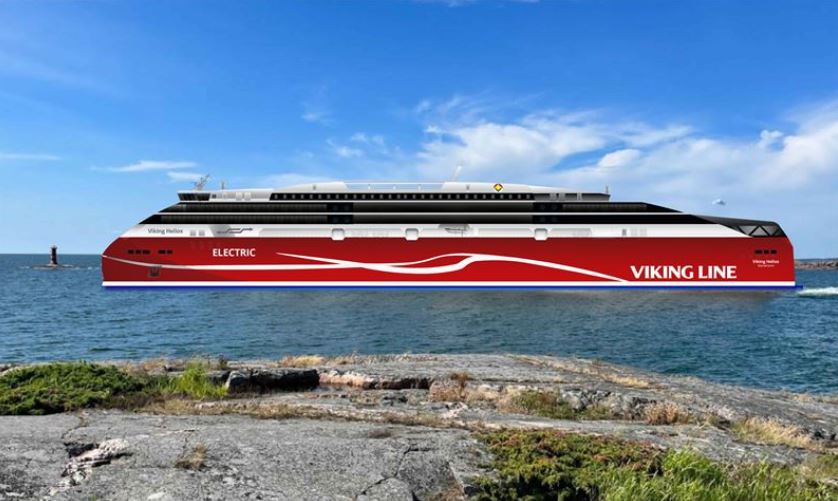 Viking Line has unveiled the Helios, a concept for a fully emissionŌĆæfree passengerŌĆæcar ferry intended for the Helsinki–Tallinn route.
Viking Line has unveiled the Helios, a concept for a fully emissionŌĆæfree passengerŌĆæcar ferry intended for the Helsinki–Tallinn route.
At 195ŌĆ»metres in length and 30ŌĆ»metres in width, the vessel would be the world’s largest allŌĆæelectric ferry, carrying approximately 2,000 passengers, 650 cars, and 2ŌĆ»km of freight space.
Powered by an 85–100ŌĆ»MWh battery and capable of 23ŌĆ»knots, it would cross the 80ŌĆ»km Gulf of Finland route in just over two hours, recharging entirely while docked using over 30ŌĆ»MWh of port charging capacity.
Developed in partnership with Rauma shipyard and other stakeholders, the Helios concept aims for operation as early as the early 2030s.
“Helios heralds a new era in maritime transport... the world’s largest fully electric passengerŌĆæcar ferries could be in operation as early as the beginning of the next decade,” said Viking Line CEO Jan Hanses.
Viking Line has already invested hundreds of millions of euros in lowŌĆæemission shipping. In 2013, it launched Viking Grace, the first passenger ship running on LNG and biogas, followed by the more climateŌĆæsmart Viking Glory in 2022. Customers can opt to travel using biofuel, reducing emissions by 90ŌĆ»%, and freight clients have also agreed to use biofuel.
The FINŌĆæEST Green Corridor initiative—supported by Helsinki and Tallinn cities, their ports, Estonia’s Ministry of Climate, Viking Line, Rederi AB Eckerö and Tallink Grupp—supports emissionŌĆæfree shipping in the region.
The Port of Helsinki forecasts passenger numbers between West Harbour and Tallinn to rise from 5.5 million in 2024 to 11.6 million by 2040, with cargo volumes also growing.
Viking Line plans to order two electric ships for yearŌĆæround deployment. This spring, Viking Line sought EU Innovation Fund support to build an electric ferry.
Viking Line is a Finnish shipping company that operates passenger and freight ferry services in the Baltic Sea, including routes between Finland, Sweden and Estonia.



